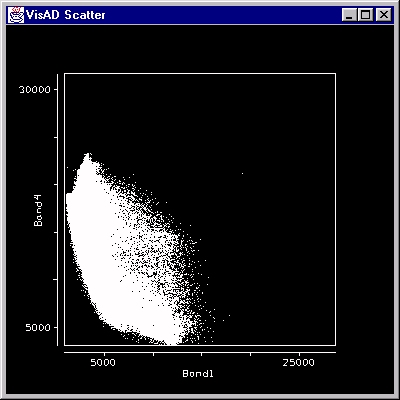

Text($x, row.names(hab_std), col=c(as.numeric(hab.class)+10)) import matplotlib.pyplot as plt import numpy as np t. Plot($x, type="n", xlim=c(0,30), ylab=c("LDA Axis 1")) You can use decreasing axes by flipping the normal order of the axis limits. A scatter plot arranges one variable on the x-axis and another on the y-axis. #create a scatterplot of the discriminant function values Like box plots, histograms are simple to create, and these figures offer. #create a histogram of the discriminant function values Is it therefore not appropriate to use a scatter plot in this situation? I assume also in this case then you cannot calculate a 95% confidence interval ellipse.? #code for my discriminant analysis I would prefer the scatter plot but then this is LD1 plotted against an arbitrary x-axis (essential the x-axis goes from 1 to 23 (my number of sites), the y-axis is the range of the discriminant function values, and then the first site is assigned to x=1 and its discriminant function value is plotted). I am able to produce both a scatter plot or a histogram (see below). A quick description of the association in a scatterplot should always include a description of the form, direction, and strength of the association, along with the presence of any outliers. The skew of a distribution relates to the distribution of a single variable, and you should use a histogram for that.

I am therefore interested to know what the appropriate way to graph the data is? Scatterplots highlight relationships between pairs of variables. I am using R and the MASS package function lda().īecause I am only interested in two groups, only one linear discriminant function is produced. The hist3 function displays the bins as 3-D rectangular bars, and the height of each bar indicates the number of elements in the bin. Various common types of patterns are demonstrated in the examples. Description example hist3 (X) creates a bivariate histogram plot of X (:,1) and X (:,2) using 10-by-10 equally spaced bins. Such relationships manifest themselves by any non-random structure in the plot. I have 23 wetlands and 11 environmental variables and am interested in distinguishing two groups: occupied wetlands vs unoccupied wetlands. Purpose: Check for Relationship A scatter plot (Chambers 1983) reveals relationships or association between two variables. Figure 16: Scatter plot matrix showing possible relationships between multiple variables. I am using a discriminant function analysis to see which environmental variables best discriminate my study wetlands into those occupied by a species and those not occupied. Additional graphs can be added: histograms for each variable to identify outliers, density ellipses for each scatter plot to identify multidimensional outliers, heatmaps of correlations to clarify possible relationships.


 0 kommentar(er)
0 kommentar(er)
